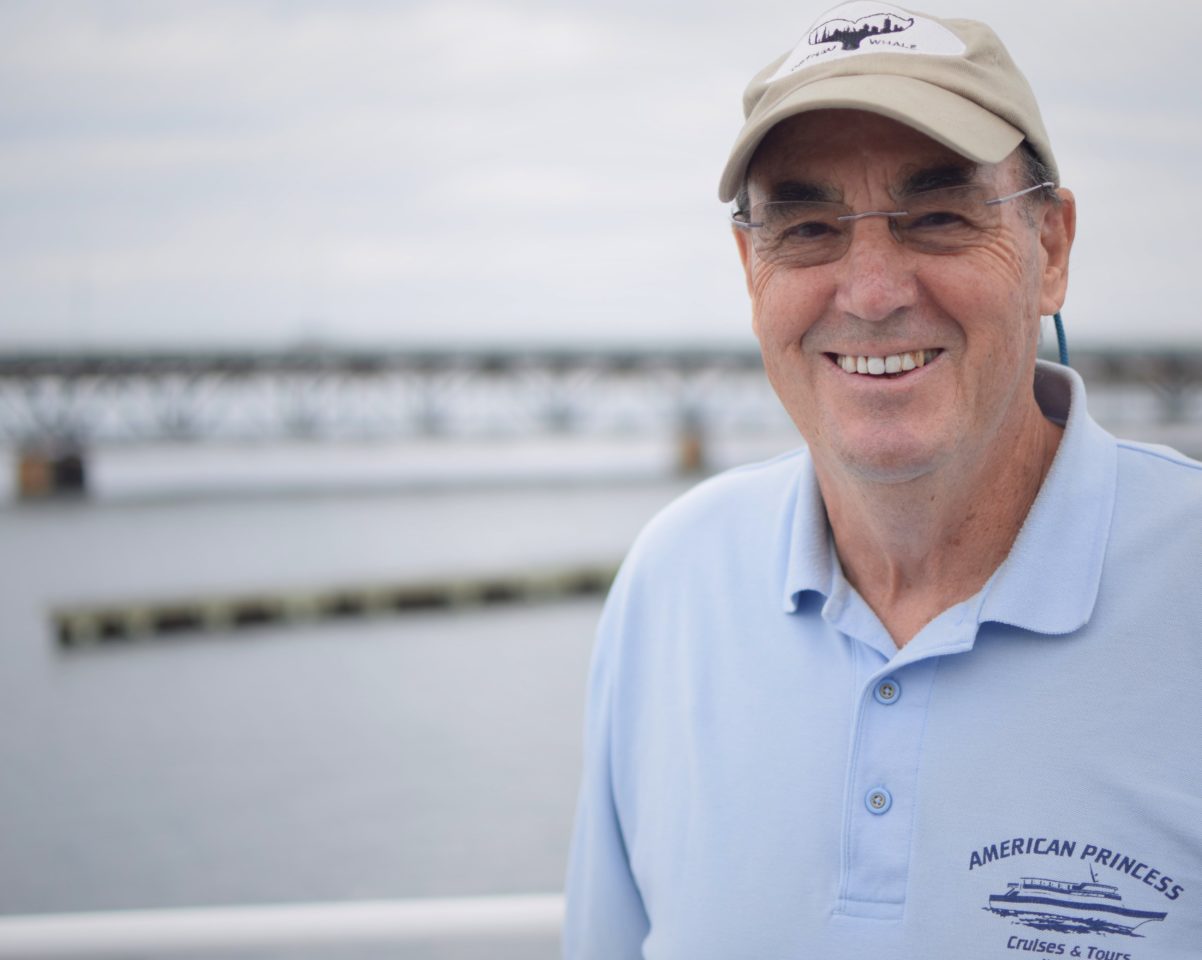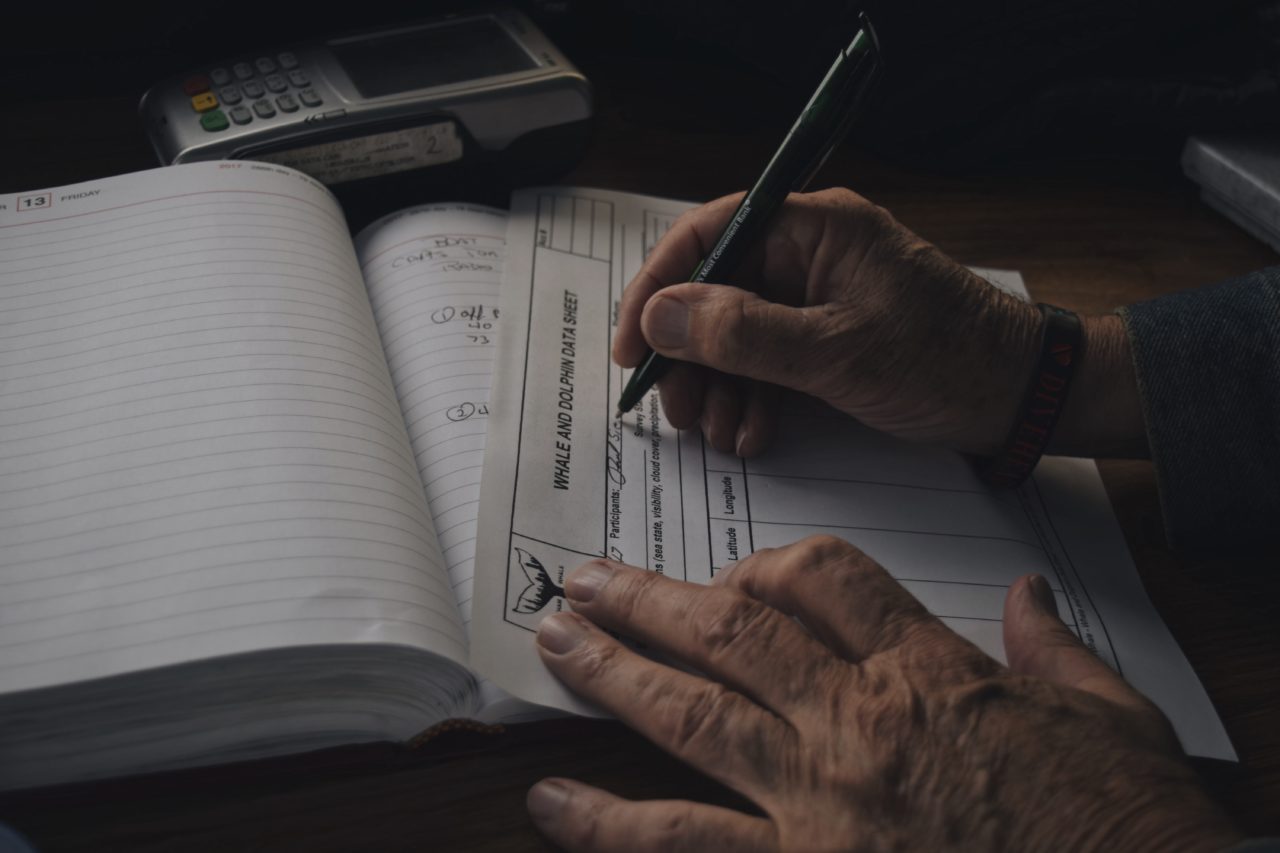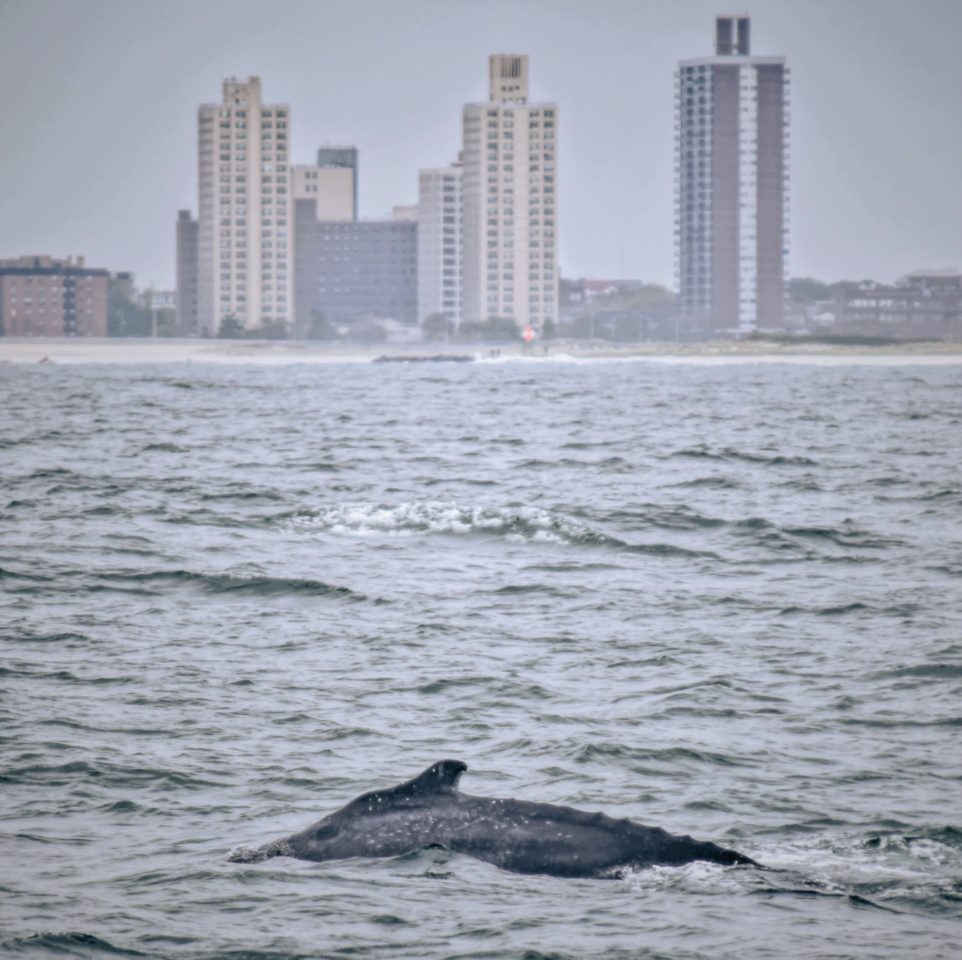Our Ocean at Work: A Whale of a Challenge
Published by Ocean Conservancy
Imagine yourself in New York City, yellow taxies zooming by you, cars endlessly blasting their horns, and a disarray of people, boundlessly marching through their concrete jungle like an army of ants. Suddenly from the corner of your eye you catch mist spraying into the air. You divert your focus away from the towering steel mountains looming over the horizon and zealously scan the seas. For a moment everyone is silent and everything is still.
Then BOOM a monstrous humpback whale bursts out of the water, fish flopping around out of its mouth, and thunderously careens back into the harbor leaving a wall of water in her wake.
Yes, there are whales in and around New York Harbor!
And this is just a day in the life of Paul Sieswerda, founder of Gotham Whale—New York City’s own non-profit citizen science-based whale research and advocacy organization.
Inspired by Jacques Cousteau, Paul has had an extensive career advocating for the ocean.


He spent 19 years working for the New England Aquarium and 21 years working for the New York Aquarium. Paul and his wife, Candie, even spent time raising a seal out of their home!
Paul delved into citizen science in the winter of 2006 when he began a seal monitoring program with the New York Aquarium. After reporting a steady increase in seal population over several years, Paul’s study garnered the interest of American Princess Cruises. As it so happened, Paul’s citizen science-based results validated the business’s interest in embarking in a seal watching venture, spurring the local blue economy.
When Paul retired in 2009, he continued his seal study as a volunteer naturalist. Reports of whale sightings from fishing vessels, cargo ships, and other ocean stakeholders led American Princess Cruises to a new venture in whale watching. Gotham Whale was eventually born from this crossroads of science and industry in the summer of 2011.


From 2011 to 2016, Sieswerda has recorded a drastic seasonal increase of whale abundance from 5 to 165 individuals in just 5 years! He has also accumulated data on whale behavior, feeding frequencies, entanglements, and GPS locations.
Paul has recorded thousands of dolphin sightings over the years, as well.
“Citizen science is the most cost-effective way to accumulate information,” he says.
It would cost millions of dollars in time, boat usage, and salaries to collect the wealth of data that Gotham Whale has collected.
Today, that data is available through the New York State Geographic Information Gateway. It helps managers responsible for planning the future of New York state waters and Long Island Sound to visualize where whales are located as they make decisions about where specific ocean uses should and possibly could occur.
Sieswerda’s data is currently being used to inform the Long Island Sound Blue Plan, a state ocean planning process in Connecticut. Gotham Whale has also been actively engaged in the Northeast and Mid-Atlantic regional ocean plans, providing input on where whales are located.


Paul believes ocean planning is, “such a great idea because it simply makes all the sense in the world. It’s not politically driven; it simply brings all of the various perspectives into one place so that good decision-making can be done.”
As whales are increasingly seen at the entrance to one of the busiest ports in the world, the data from Gotham Whale can help other ocean users make smart decisions to protect and invest in valuable ocean assets—including the whales and dolphins that now call it home.
To board the American Princess and become one of Paul’s citizen scientists this spring, click here!
The post Our Ocean at Work: A Whale of a Challenge appeared first on Ocean Conservancy.
Read the full article at: https://oceanconservancy.org/blog/2017/12/08/ocean-work-whale-challenge/




